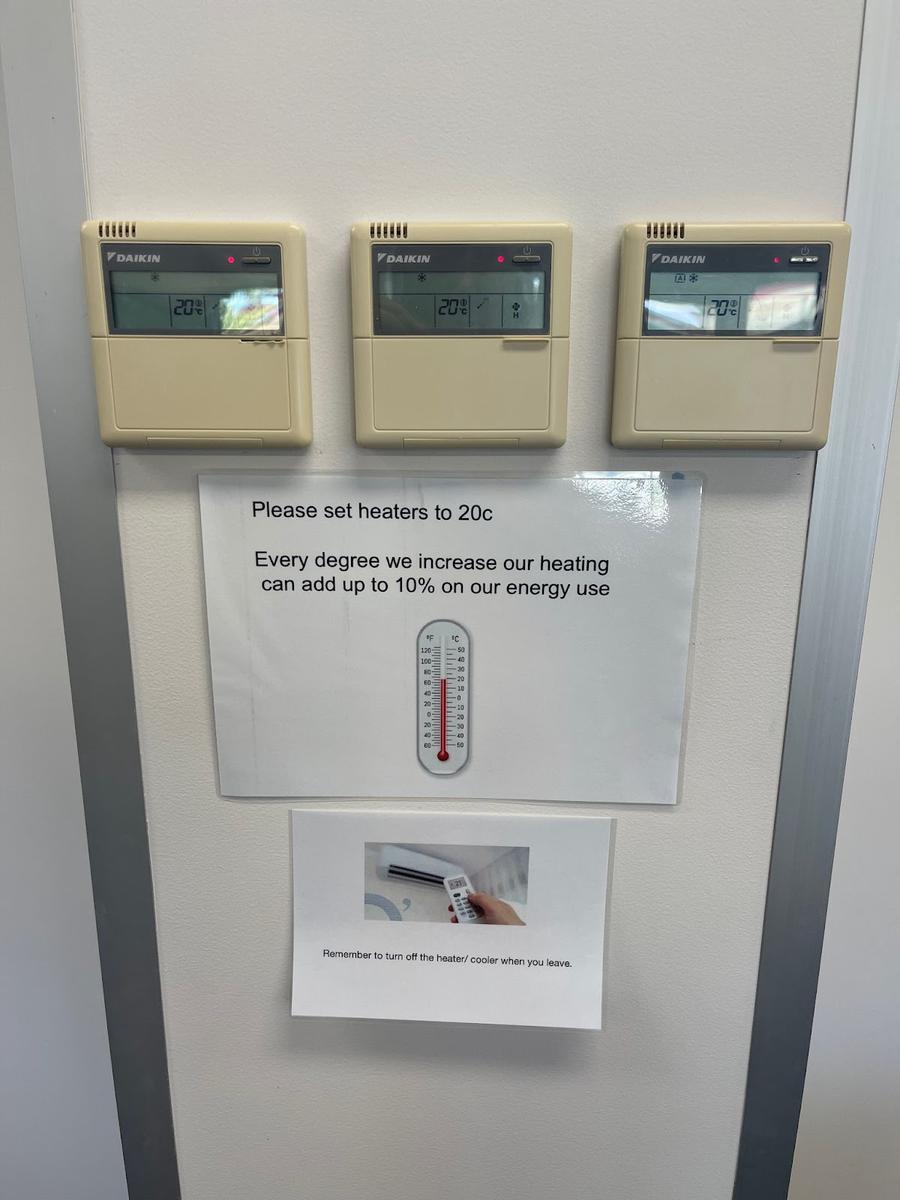Sustainability

Resource Smart School - St Mary’s School
After almost 2.5 years St Mary’s School has now completed the fifth and final module in the Resource Smart Schools Program. This is a huge achievement for our whole school community! During this time we have had on board very passionate and active Student, Parent and Staff Green Teams as well as many teachers, students and families who have been invested in this journey. Together we have strived to shift our thinking to make more conscious choices in how we choose to live and love our planet. We know our school is a reflection of these environmental shifts and we are very proud of how far we have come. As a collective, our school has gained awareness on how to decrease our carbon footprint by consistently tweaking systems with gained knowledge. We have also called on our wider Community for support such as our Resource Smart facilitators, Campaspe Shire, Bunnings, the Moama Bowling Club and Coliban Water.
From December 2020 to now we have journeyed through:
1st the Core Module - Awakening
2nd the Waste Module - Discovering
3rd the Biodiversity Module - Transforming
4th the Water Module - Sustaining and finally our
5th Module is Energy - Leading
Reporting to our School Community on what we have achieved in our Energy Module is our final task before submission. Please read our Energy Story below.
St Mary’s Echuca Energy Story
We began working on our Energy Module at the end of term three 2022. This particular module guided and encouraged our school to reduce our energy usage and save on energy bills. We also worked on energy conservation, energy efficiency, reducing greenhouse gases and improving air quality.
Energy consumption is Victorian schools’ greatest impact on the environment therefore reducing our consumption is the simplest way to reduce our school’s environmental impact. Billing data allowed us to keep track of our resource use over time.
We have created an Energy Efficiency Annual Action Plan from the findings and recommendations that result from our energy audit.
Through discussions with our Student Green Team about what we do well and what we can do differently to improve, we decided to have assigned Energy monitors in each classroom. This made a huge impact on remembering to turn off lights, screens and heaters / air conditioners when not in use. Having Green Team members then also partake in random recess and lunch time energy sweeps kept classes on their toes! The class who shows the most initiative is awarded the Sustainability Award at our Whole School Assembly.
We have signage about energy conservation practices in the staffroom, toilets, bathrooms, art room and general classrooms as required.
Other initiatives implemented have been, creating and implementing a maintenance procedure (e.g. for cleaning light fittings, reflectors, heaters, air conditioners and other appliances) and ensuring we follow a whole school shutdown procedure for the end of the day, weekend and school holiday periods.
Simple, low-cost measures have also made a difference, such as:
- Only heat or cool the rooms we are using.
- With the knowledge that every degree warmer can increase our running costs by up to 10%, all thermostats are set at 20°C in winter and in summer they are set between 24°C–27°C
- Leaving internal doors open where possible for optimum air circulation.
- Encouraging our student’s to dress appropriately for the weather. Our student’s know we are not going to turn up the heating just because they forgot their jumper! This initiated the Student Green Team in 2021 to create the ‘Wear Warm Clothes Guidelines.’ From there it was suggested that perhaps the current uniform is in need of review. In 2022 this was reviewed and a warmer uniform is underway for this 2023 winter.
Australia has recommended lighting level standards. De-lamping is the process of removing or disabling lights within a light bay in order to reduce brightness and glare, which also reduces energy waste. Re-lamping is the process of replacing inefficient globes with more efficient ones as needed. The opportunity arose for our school in January this year to partake in a significant de-lamping / re-lamping program. Even though we had our lights changed in our learning communities a couple of years ago and all new builds have the correct lighting, we were still able to change over 120 lights. The lights changed were mainly in the Admin Building and The Brigidine Centre. This program was a free Victorian Government Initiative, saving our school over $18 000, the only expense being $4000 for edging around some Smart Panels.
All our buildings have standard insulation in the walls. Any new building works we have completed have R3.5 in the ceilings and R2.5 in the walls. This improves the insulation at school. Insulating the roof with R3.5 insulation helps to reduce energy bills. Doors have weather strips to stop draughts and have tight hinged heavy doors.
Each year, our inquiry plan has Year 6 students investigating electricity and renewable energies (as per the Victorian Curriculum Science Scope and Sequence) in units called ‘It’s Electrifying’ and ‘Living the Green Dream’.
Last year our students visited TwistED Science to participate in hands-on learning activities. Our 5/6 students visited our local St Joseph's College to actively participate investigating circuits in their science lab.
Our school encourages our students to support active (walking, bike riding, scooting) and public/shared (school bus, car pooling) modes of transport, reducing reliance on personal car-based transport, thereby reducing carbon emissions. We do this by:
- Providing facilities that support active travel e.g. bike racks, storage shed.
- Advocating for safe and convenient access to schools.
Although we have made changes and have become more conscious of our energy use, we need to ensure we are constantly evolving to decrease this usage. We do have some solar panels in our Administration area, however, this module has highlighted that we certainly need more. We are currently researching for grants to make this a reality.
Currently around our school we have signage to promote our annual ‘Sandhurst Switch Off’, where all Catholic schools are encouraged to ‘switch off’ all lights and any other electronic devices for part of the day or the whole day. This will be happening at St Mary’s School next Friday the 24th of March.
Soon our Energy Module will be reviewed. If we are successful in achieving this module we are invited to apply to be a 5 Star ResourceSmart School. To achieve this status a ResourceSmart Panel is invited to our school to see we have all five modules at work. If signed off, St Mary’s will become a flagship school for the Campaspe and Sandhurst Dioceses. Something for the whole community to be proud of!


